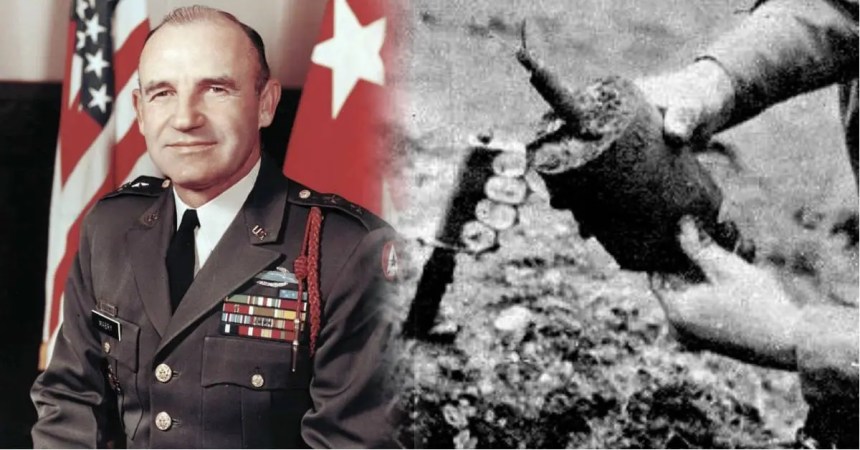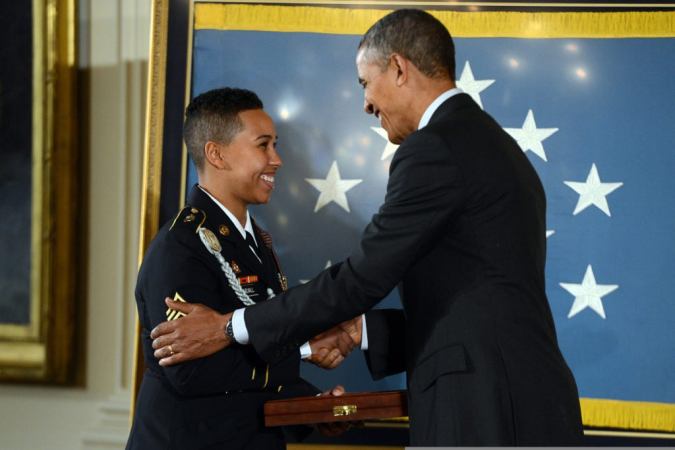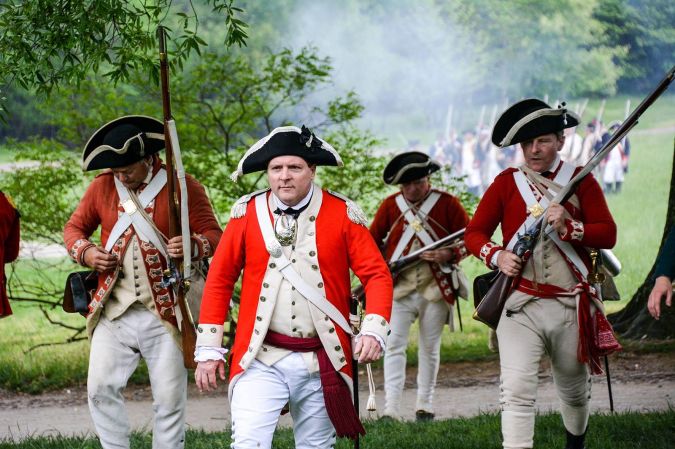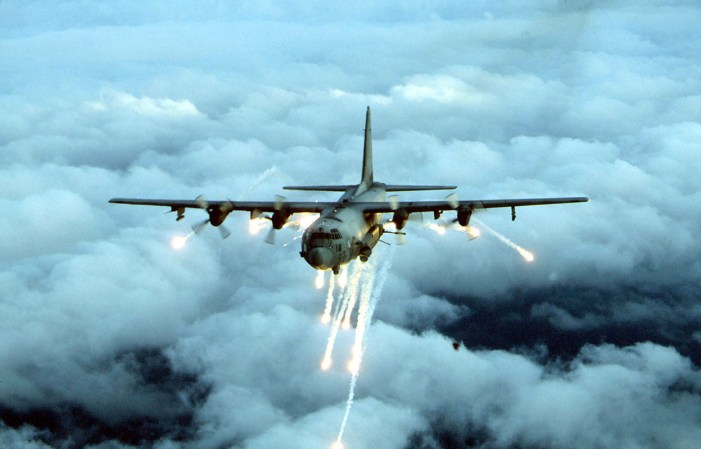Havildar Bhanbhagta Gurung was a rifleman in the Indian Army when, in 1945, he rushed past his pinned-down platoon under sniper, machine gun, and rifle fire to take the fight to the Japanese on his own, cutting down five enemy positions and capturing a hill which he then defended against counterattack.

Gurkha infantry marches through the streets of Japan after the war.
(British Army)
Bhanbhagta Gurung joined the Indian Army, then part of the British Empire, soon after the outbreak of World War II and was assigned to the 3rd Battalion, 2nd King Edward VII’s Own Gurkha Rifles, otherwise known as the Sirmoor Rifles.
The unit was assigned a dangerous mission in the Burma theater of the war: Sneaking behind Japanese lines and wreaking havoc until hunted down by Japanese forces, then dispersing to start all over. This “chindit” operation was successful but costly. Bhanbhagta Gurung’s unit was sent for refit and he was promoted to corporal and given command of a rifle section.
Initially, he did well in the position, but was charged with neglect of duty and demoted after his section held the wrong hill during an operation. Bhanbhagta Gurung maintained for his entire life that he had occupied the hill he was ordered to take, and it’s thought that his platoon leader had relayed the orders wrong but let Bhanbhagta Gurung take the rap.

Gurkha soldiers train in Malaya in 1941.
(British Army photo by Lt. Palmer)
Bhanbhagta Gurung was sent to another company in disgrace, but he would prove his heroism within months. In March, 1945, he was sent with the 25th Indian Division to the Burma coast with orders to proceed to the Irawaddy River through the An Pass.
Japanese defenders put up a stiff resistance to the oncoming Gurkha forces. Bhanbhagta Gurung’s company was sent against an objective code-named Snowdon East. The hill was crisscrossed with trenches and foxholes.

Gurkha artillerymen fire in Tunisia during World War II.
(British Army photo by Capt. Keating)
The Gurkhas were making their way up when enemy mortar and machine gun fire pinned them down. Grenades rained down and inflicted additional casualties. As the men looked for a way out of their predicament, a Japanese sniper in a nearby tree began picking them off.
Meanwhile, the men suffered friendly fire from their own artillery because of the odd ballistics required by firing up the hills. The big guns stopped firing, leaving the infantry without support.
Bhanbhagta Gurung decided to take care of one problem at a time. Unable to get a good shot at the sniper from his prone position, he stood up with machine gun fire flying past him and mortars and grenades exploding everywhere. He aimed his rifle into the tree and ended the unit’s sniper problem.

Gurkha forces practice using explosives to expel enemy soldiers from trenches.
(British Library)
The section moved forward again, but only made it 20 yards before the withering fire resumed. Bhanbhagta Gurung decided that he wasn’t getting pinned down again and rushed forward on his own while under the accurate machine gun fire of a nearby bunker.
He hit the first enemy foxhole and tossed in two grenades, killing both defenders, before he rushed to the next position and cleared it with his bayonet.
The rest of his section was still taking fire from two foxholes, so Bhanbhagta Gurung went to them, again turning to grenades and bayonet to clear them. By this point, he was right at the machine gun bunker that had been trying to kill him and his section for the entire assault.

A British infantryman places his Bren light machine gun into operation in 1944.
(British Army photo by Sgt. Laing)
He rushed up, still under fire, and climbed onto the roof of the bunker. Completely out of grenades and low on ammo, he grabbed two smoke grenades and tossed them through the bunker’s slit. The smoke was created by white phosphorous and the defenders rushed out, nearly blinded by it.
Bhanbhagta Gurung grabbed his traditional kukri knife and used it to kill the Japanese troops. Still, a machine gunner remained inside, raining fire on the platoon — so Bhanbhagta Gurung crawled in. He found that there wasn’t enough room to swing his knife and instead used a rock to end the gunner’s life. The hill now belonged to the Gurkhas.
Some of the Japanese defenders that had fled next organized a counterattack. Bhanbhagta Gurung organized a defense, including placing a Gurkha machine gunner in the captured bunker. The Gurkhas fended off the Japanese attack and held the hill.
The Gurkhas had suffered heavy losses — approximately half the company had been killed or wounded. But the casualty rate would likely have been much higher if not for Bhanbhagta Gurung. In fcat, they may have failed to take the hill at all. Bhanbhagta Gurung was put in for the Victoria Cross and later received it.
He was also promoted, eventually regaining the rank of corporal. When the war ended later that year, he decided to get out of the military and care for family at home. He was later given a ceremonial promotion to sergeant in honor of his service and was awarded the Medal of the Order of the Star of Nepal by the King of Nepal.
The family he raised included three sons who joined the Gurkha rifles and later retired from the military. He died in March 2008 in Gorkha, a region of Nepal.
In 2015, re-enactors recreated his stunning success during a celebration marking 200 years of Gurkha service in the British military. The video is embedded above.


























